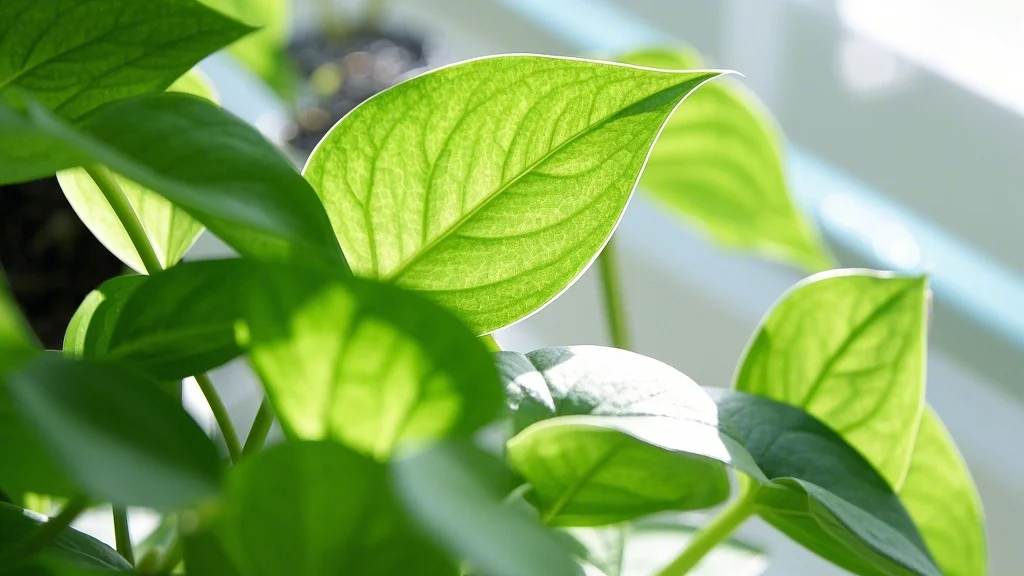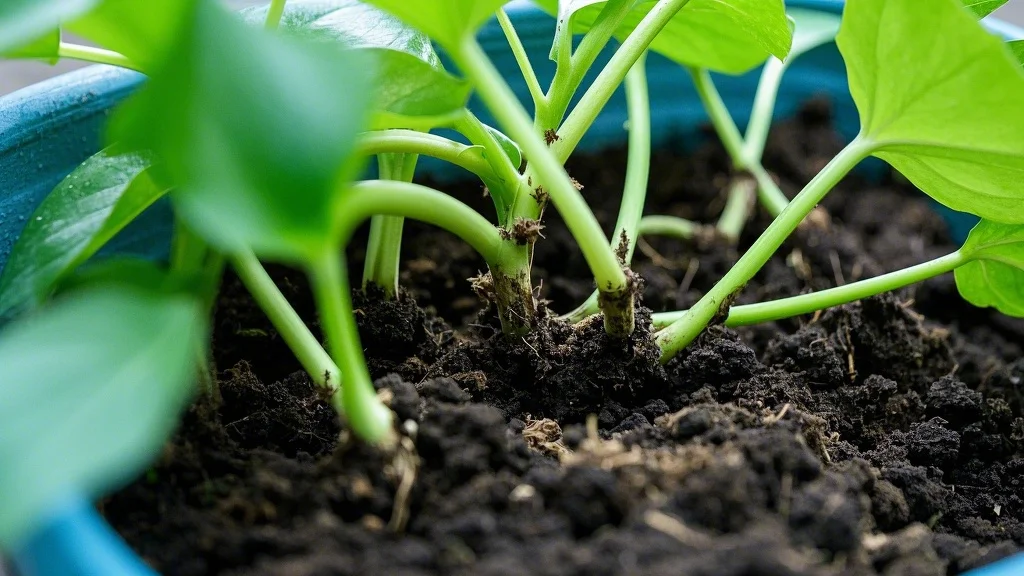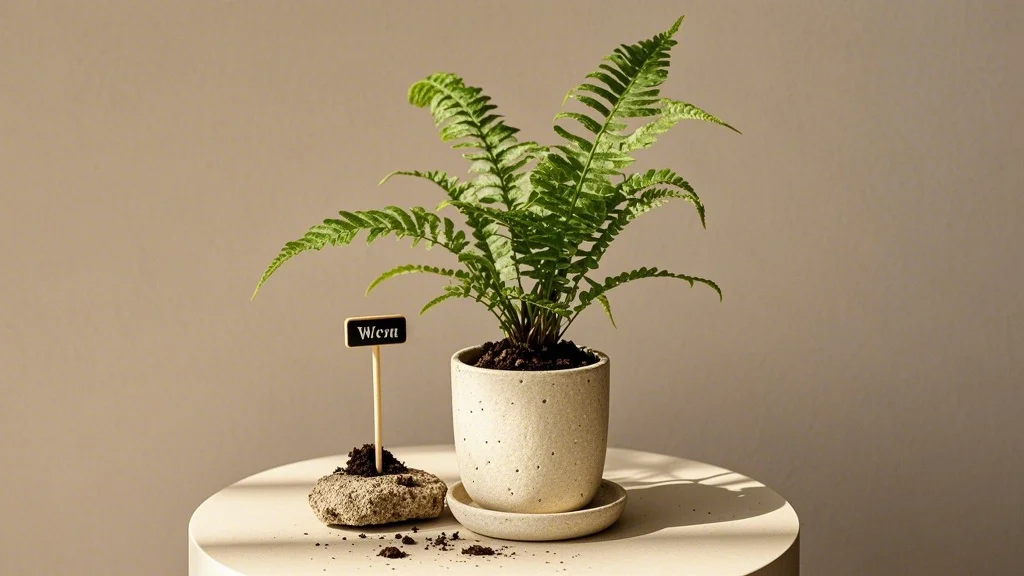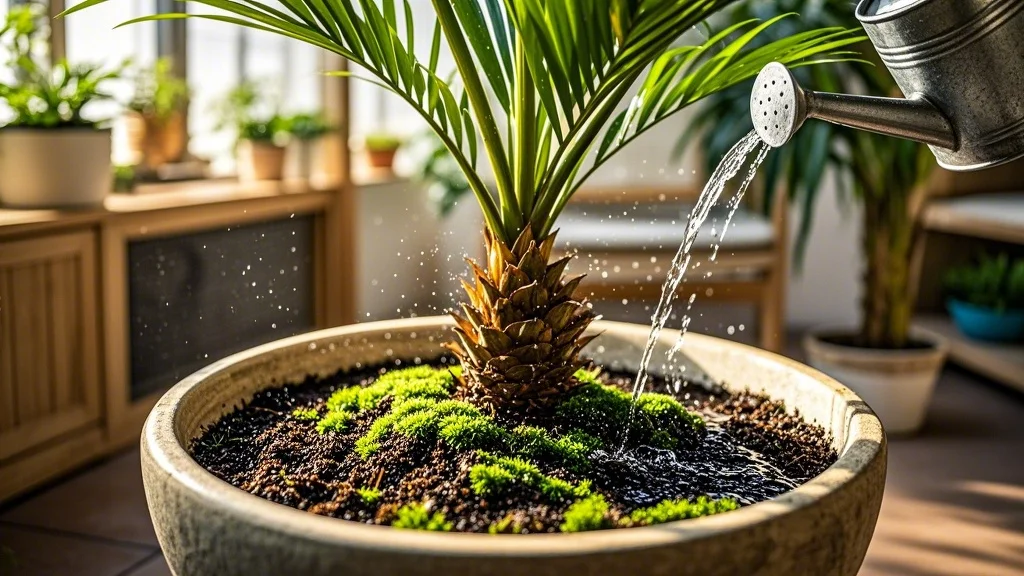In the quest for cleaner indoor air, many urban dwellers are turning to nature’s own air purifiers: houseplants. Among these green heroes, the pothos (Epipremnum aureum) stands out as a champion of air purification and ease of care. Also known as devil’s ivy, this versatile vine is not just a pretty face in your home decor; it’s a hardworking air cleaner that can significantly improve your indoor air quality.
Contents
- 1 The Science Behind Pothos Air Purification
- 2 Specific Air Pollutants Removed by Pothos
- 3 Benefits of Using Pothos as an Air Purifier
- 4 Growing and Caring for Your Pothos Air Purifier
- 5 Maximizing Air Purification with Pothos
- 6 Pothos Varieties for Air Purification
- 7 Safety Considerations
- 8 Comparing Pothos to Other Air-Purifying Plants
- 9 Integrating Pothos into Your Home Decor
- 10 Conclusion
The Science Behind Pothos Air Purification
NASA Clean Air Study
The air-purifying abilities of pothos gained widespread recognition following NASA’s Clean Air Study in the late 1980s. This groundbreaking research aimed to find effective ways to purify air in sealed environments, such as space stations. The study revealed that certain houseplants, including pothos, could remove significant amounts of indoor air pollutants.
How Pothos Cleans the Air

Pothos plants clean the air through a process called phytoremediation. This natural phenomenon involves:
- Stomatal uptake: The plant’s leaves absorb airborne toxins through tiny pores called stomata.
- Root zone filtration: Microorganisms in the soil around the plant’s roots help break down pollutants.
- Metabolic breakdown: The plant’s internal processes convert harmful compounds into harmless byproducts.
Specific Air Pollutants Removed by Pothos
Pothos is particularly effective at removing several common indoor air pollutants:
- Formaldehyde: Found in many household products, including pressed wood furniture and certain fabrics.
- Benzene: Present in paints, plastics, and tobacco smoke.
- Xylene: Often found in adhesives, paints, and printing materials.
- Carbon Monoxide: A dangerous gas produced by incomplete combustion.
- Trichloroethylene: Used in adhesives, paint removers, and spot removers.
By absorbing these pollutants, pothos helps create a healthier indoor environment, potentially reducing the risk of respiratory issues, headaches, and other health problems associated with poor air quality.
Benefits of Using Pothos as an Air Purifier
1. Low Maintenance
One of the most significant advantages of pothos as an air purifier is its low maintenance requirements. Unlike electronic air purifiers that need regular filter changes and electricity, pothos thrives with minimal care.
2. Cost-Effective
Pothos plants are inexpensive to purchase and maintain compared to electronic air purifiers. A single plant can last for years with proper care, providing continuous air purification without ongoing costs.
3. Versatility
Pothos can grow in various conditions, making it suitable for different areas of your home or office. It can thrive in low light, making it perfect for spaces where other plants might struggle.
4. Aesthetic Appeal
While cleaning your air, pothos adds a touch of natural beauty to your space. Its cascading vines and vibrant green leaves can enhance any interior design scheme.
5. Humidity Regulation
In addition to removing pollutants, pothos helps regulate indoor humidity levels through transpiration, which can improve overall air quality and comfort.
Growing and Caring for Your Pothos Air Purifier

To maximize the air-purifying benefits of your pothos, proper care is essential. Here’s a guide to help you grow a thriving pothos plant:
Light Requirements
Pothos is adaptable to various light conditions, but it performs best in bright, indirect light. It can tolerate low light areas, but its growth may slow, and variegated varieties might lose their color patterns.
Watering Needs
Allow the top inch of soil to dry out between waterings. Overwatering can lead to root rot, while underwatering causes wilting and leaf drop. A good rule of thumb is to water once a week, adjusting based on your home’s humidity and temperature.
Soil and Fertilizer
Use a well-draining potting mix to prevent waterlogging. Fertilize monthly during the growing season (spring and summer) with a balanced, water-soluble fertilizer diluted to half strength.
Temperature and Humidity
Pothos prefers temperatures between 60-80°F (15-27°C). It can tolerate average household humidity but will appreciate occasional misting, especially in dry environments.
Pruning and Propagation
Regular pruning helps maintain the plant’s shape and encourages bushier growth. Pruned stems can be easily propagated in water, allowing you to multiply your air-purifying army.
Maximizing Air Purification with Pothos
To get the most out of your pothos as an air purifier:
- Use multiple plants: The more plants you have, the more air they can clean.
- Place strategically: Position plants near potential sources of pollutants, such as near furniture or in high-traffic areas.
- Keep leaves clean: Dust your pothos regularly to ensure its leaves can function efficiently.
- Ensure proper ventilation: While pothos cleans the air, good air circulation is still important for overall indoor air quality.
Pothos Varieties for Air Purification
While all pothos varieties offer air-purifying benefits, some popular choices include:
- Golden Pothos: The classic variety with green and yellow variegated leaves.
- Marble Queen: Features heavily variegated white and green leaves.
- Neon Pothos: Boasts bright, lime-green foliage that adds a pop of color.
- Jade Pothos: Has solid green leaves and is particularly tolerant of low light conditions.
Safety Considerations
While pothos is an excellent air purifier, it’s important to note that it is toxic if ingested. Keep the plant out of reach of pets and small children. If you have concerns, consider placing the plants in hanging baskets or on high shelves.
Comparing Pothos to Other Air-Purifying Plants
While pothos is a top performer in air purification, it’s worth comparing it to other popular air-cleaning plants:
- Spider Plant: Another easy-care option that removes formaldehyde and xylene.
- Snake Plant: Excellent at removing benzene and trichloroethylene, also tolerates low light.
- Peace Lily: Removes ammonia and is known for its beautiful white flowers.
Pothos stands out for its combination of effective air purification, ease of care, and rapid growth rate.
Integrating Pothos into Your Home Decor
Pothos not only cleans your air but can also enhance your home’s aesthetic. Here are some creative ways to incorporate pothos into your decor:
- Hanging baskets: Allow the vines to cascade down for a dramatic effect.
- Bookshelf accent: Train the vines to climb along bookshelves.
- Wall-mounted planters: Create a living wall of air-purifying greenery.
- Bathroom brightener: Pothos thrives in humid environments, making it perfect for bathrooms.
Conclusion
Pothos proves that sometimes the simplest solutions are the most effective. As an air purifier, it offers a natural, cost-effective, and aesthetically pleasing alternative to electronic devices. By incorporating pothos into your indoor spaces, you’re not just adding a touch of green; you’re investing in cleaner air and a healthier living environment.
Whether you’re a seasoned plant parent or a beginner looking to improve your indoor air quality, pothos is an excellent choice. Its air-purifying prowess, combined with its forgiving nature and versatility, makes it the perfect plant for urban dwellers seeking to create a cleaner, greener indoor oasis.
Remember, while pothos is a powerful air purifier, it works best as part of a comprehensive approach to indoor air quality. Combine your pothos care with good ventilation practices, regular cleaning, and mindful choices about the products you bring into your home for the best results.
With its lush foliage and air-cleaning capabilities, pothos truly earns its place as nature’s easy air cleaner. So why not bring this green superhero into your home and breathe easier knowing you have a natural air purifier working tirelessly for your health and well-being?








